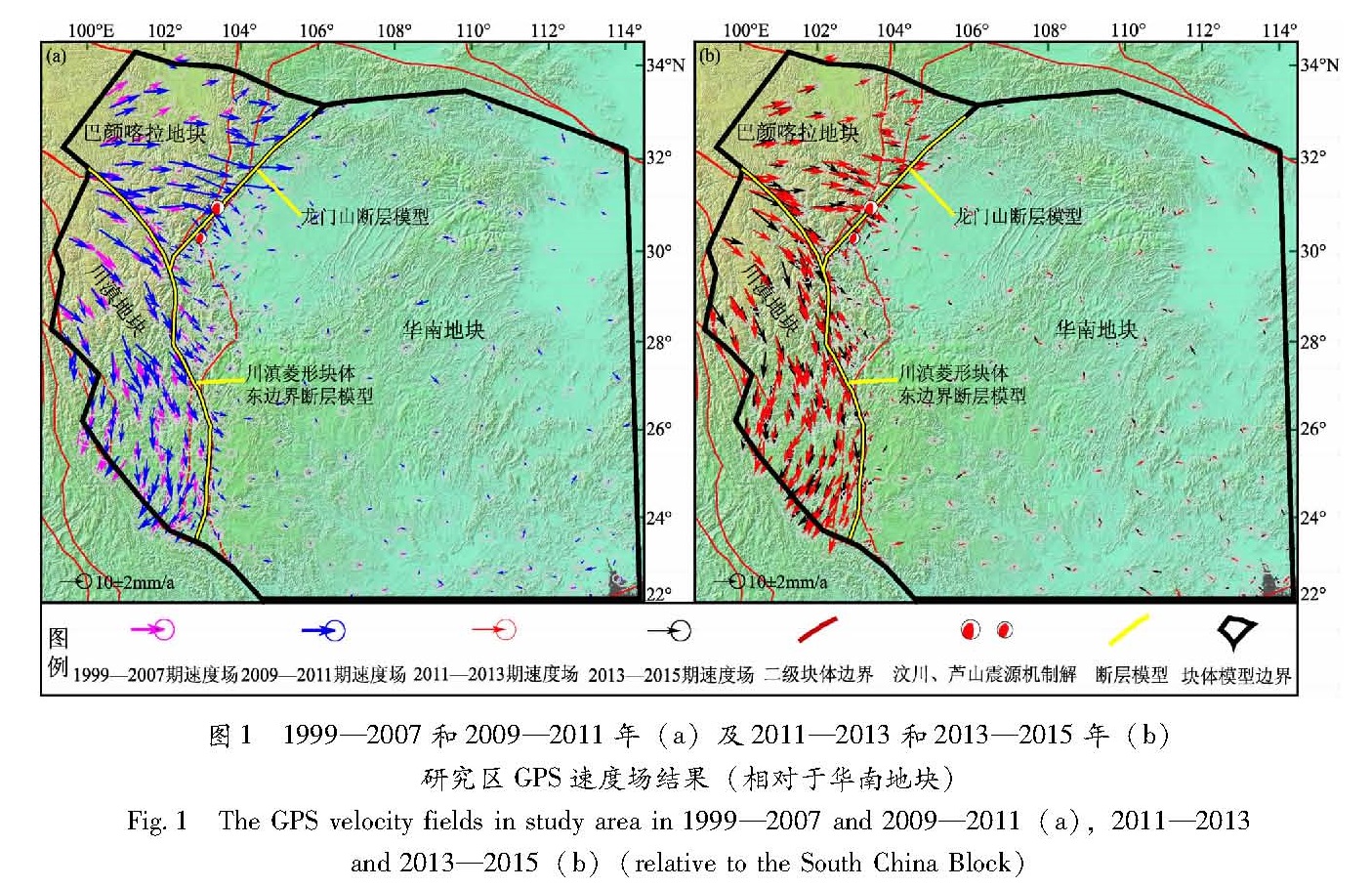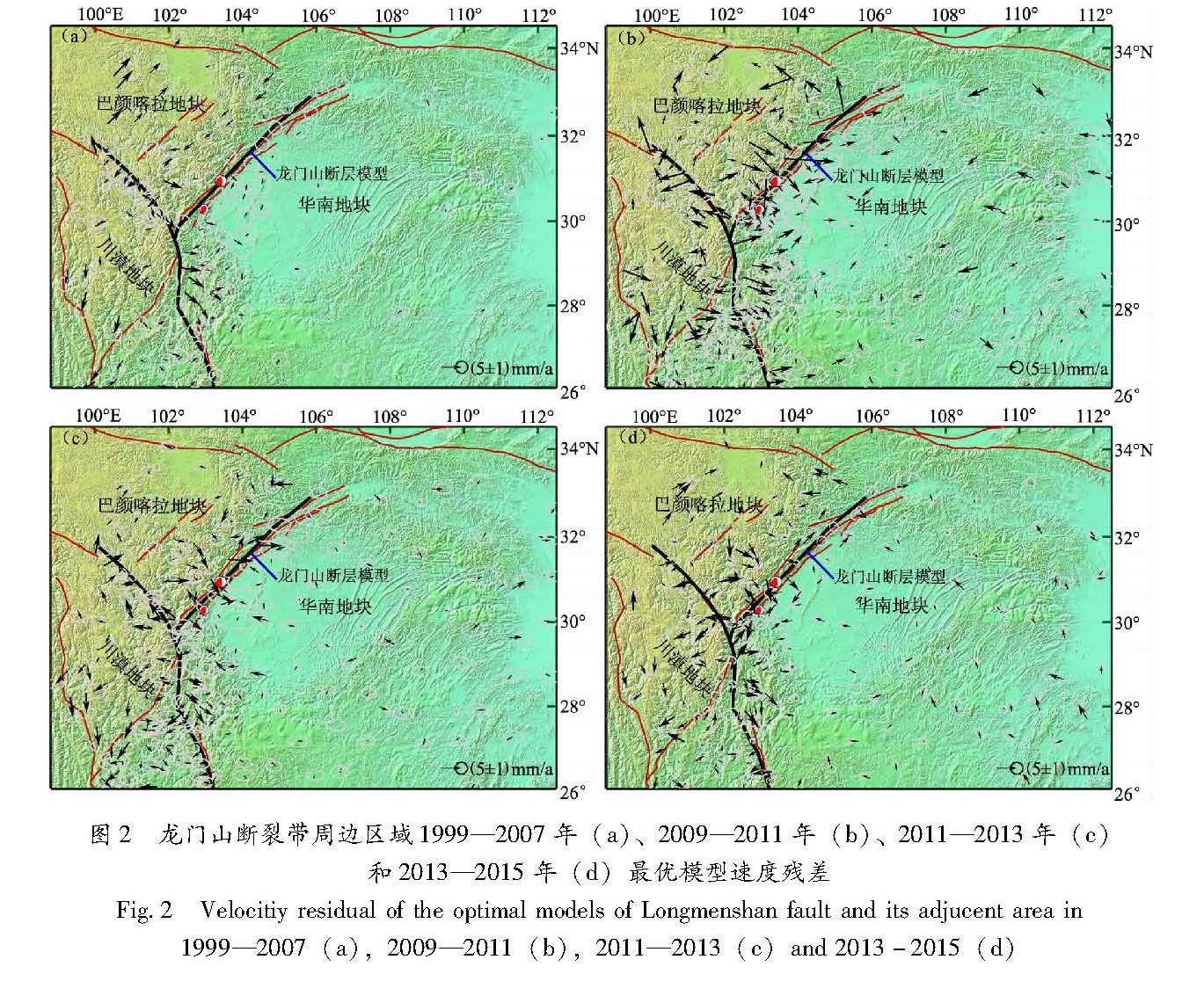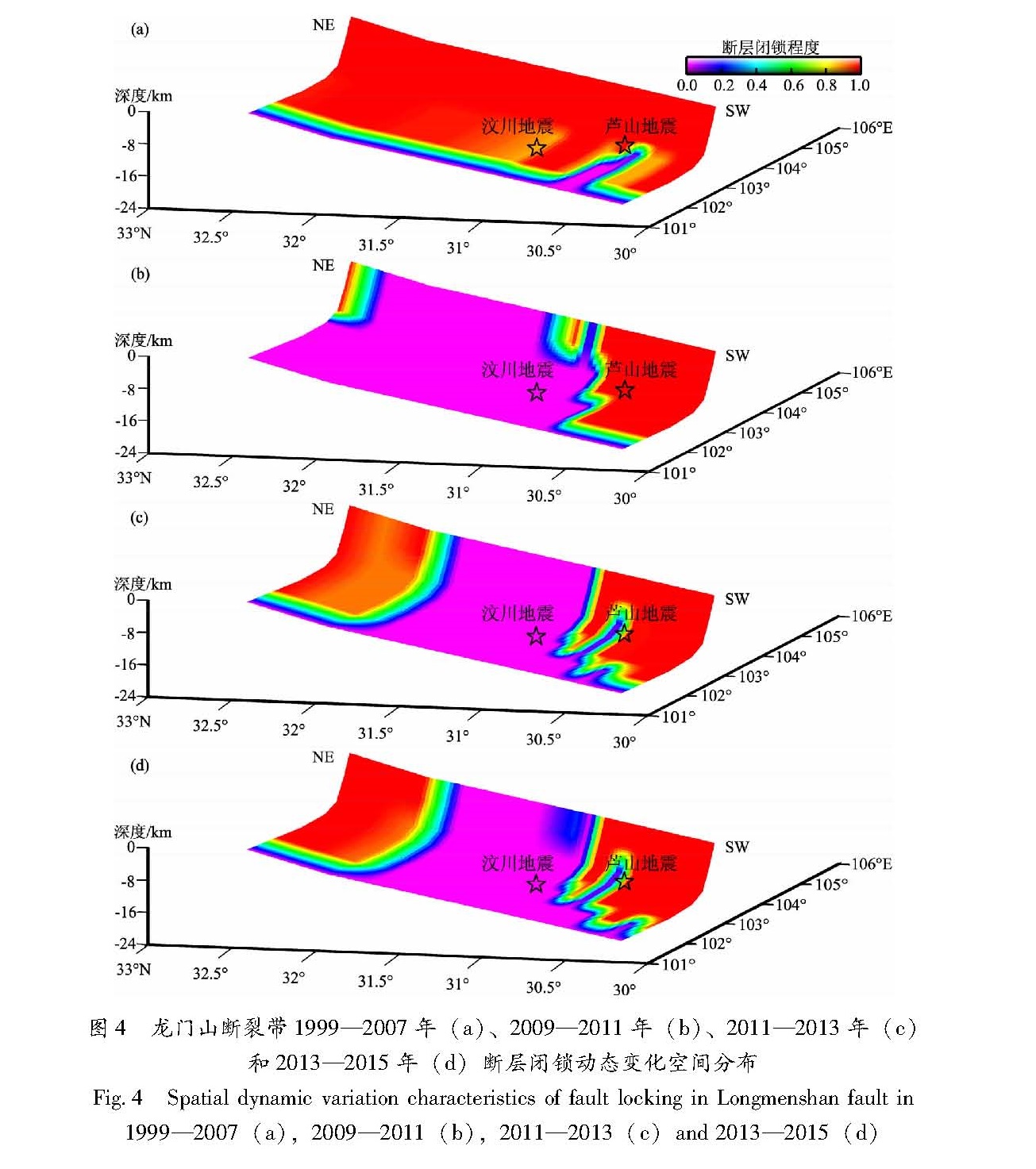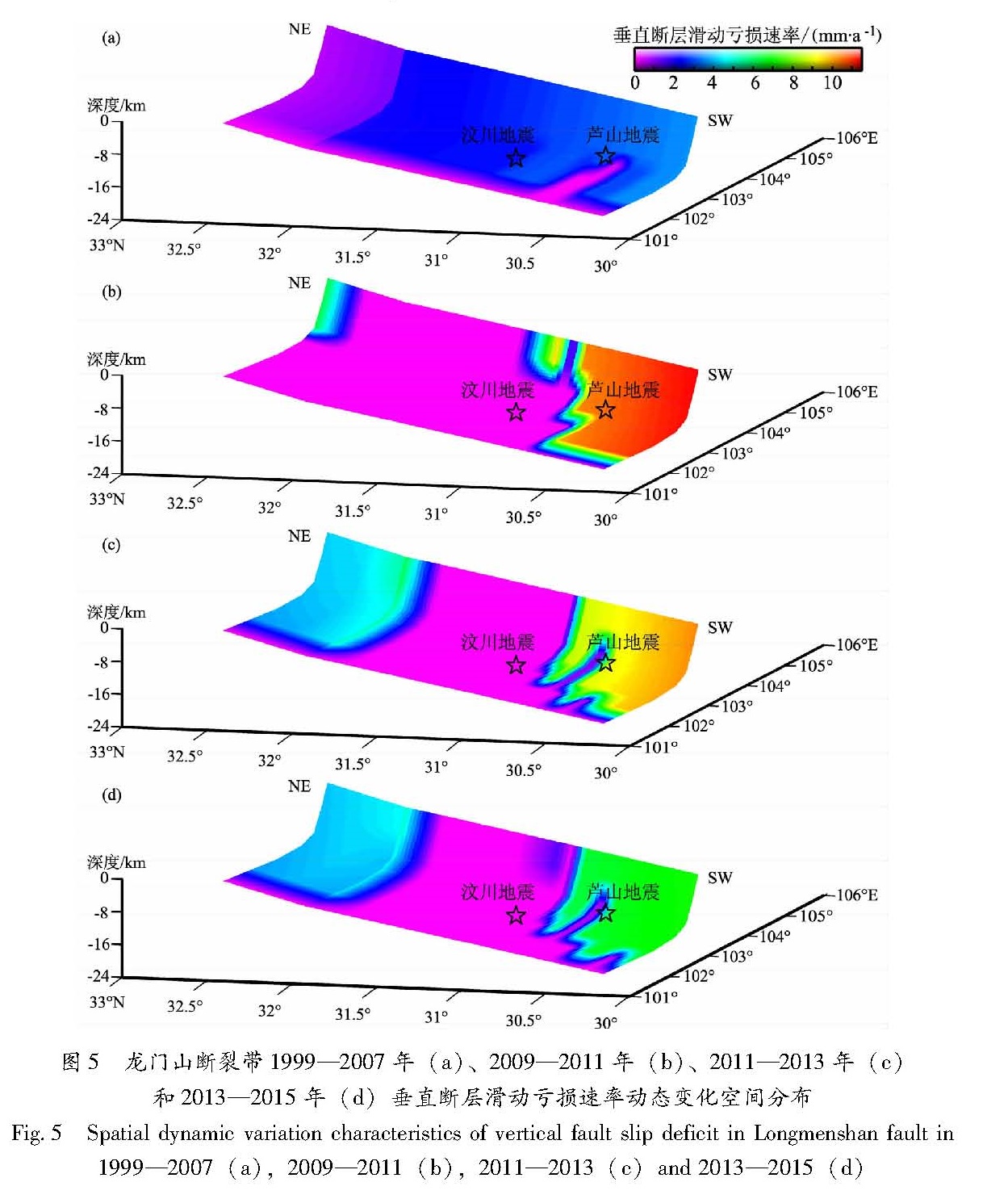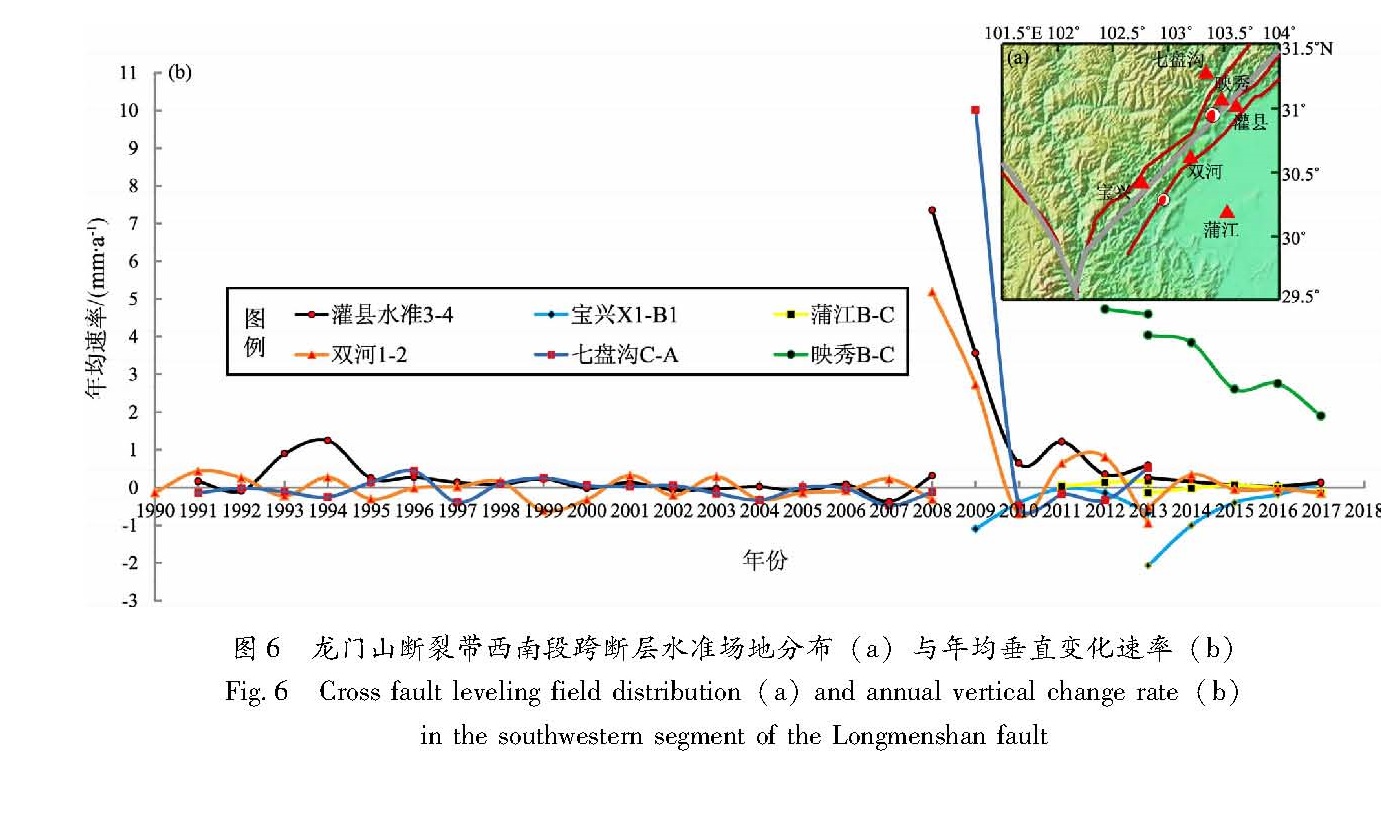基金项目:地震科技星火计划项目(XH16044)、国家自然科学基金(11672258)和2017年度震情跟踪专项工作任务(2017010225)联合资助.
备注
为研究龙门山断裂带西南段断层闭锁程度与变形状态,并分析该区域地震危险性,利用1999—2007、2009—2011、2011—2013和2013—2015年共4期GPS速度场,采用DEFNODE负位错反演程序估算了该断裂的闭锁程度和滑动亏损空间动态分布,并结合1990—2017年跨断层水准资料分析了断层的三维运动变形特征。结果 表明:(1)龙门山断裂带西南段在汶川地震前后一直处于较强的闭锁状态,且汶川地震使西南段应变积累速度加快,加速了芦山地震的孕育进程; 芦山地震后西南段闭锁程度并没有明显减弱,芦山地震对西南段的应变能释放是局部的和有限的。(2)龙门山断裂带4期垂直断层滑动亏损速率均为挤压亏损速率,汶川地震后西南段亏损速率明显增大,而后2期西南段亏损速率逐渐减小,目前依然明显高于汶川地震前量值。(3)汶川地震前跨断层水准结果显示龙门山断裂带西南段处于完全闭锁状态,汶川地震后多个场地的年均垂直变化速率明显增大,并随时间呈逐渐衰减状态,目前已经恢复至汶川地震前正常变化速率,因此西南段仍然处于闭锁状态。综合GPS反演结果和跨断层水准结果分析认为,目前龙门山断裂带西南段在大部分段落处于强闭锁状态下依然有发生大地震的可能性。
To study the dynamic characteristics of fault locking and deformation,and seismic risk in southwestern segment of the Longmenshan fault,we selected the negative dislocation model of DEFNODE to invert the spatial fault locking and fault slip deficit variations,by using GPS velocity field data during 1999-2007,2009-2011,2011-2013 and 2013-2015.and analyzed the 3-dimensional movement and deformation of the fault combining with the cross fault leveling data during 1990-2017.The results show that(1):The Wenchuan earthquake didn't rupture the southwestern segment of the Longmenshan fault,which is always tightly locked. The Wenchuan earthquake accelerated strain accumulation of the southwestern segment and seismogenic process of the Lushan Earthquake. Fault locking of southwestern segment didn't reduce obviously after the Lushan Earthquake. The Lushan earthquake didn't release all the accumulated strain of the southwestern segment which is tightly locked,and the strain releasing was locall and limited.(2)The vertical fault slip deficits during four periods are all compressional. Slip deficit of the southwestern segment increased obviously after the Wenchuan earthquake,and then it decreased gradually. Slip deficit at present is much larger than that before the Wenchuan earthquake.(3)Annual vertical change rate reveals the southwestern segment of the Longmenshan fault is tightly locked before the Wenchuan earthquake. Several field rates increased obviously after the Wenchuan earthquake,then gradually decreased,and returned to normal at present. Combining GPS results and cross fault leveling results,we consider it is possible that major earthquakes happen in southwestern segment under the condition of its most segments tightly locked.
